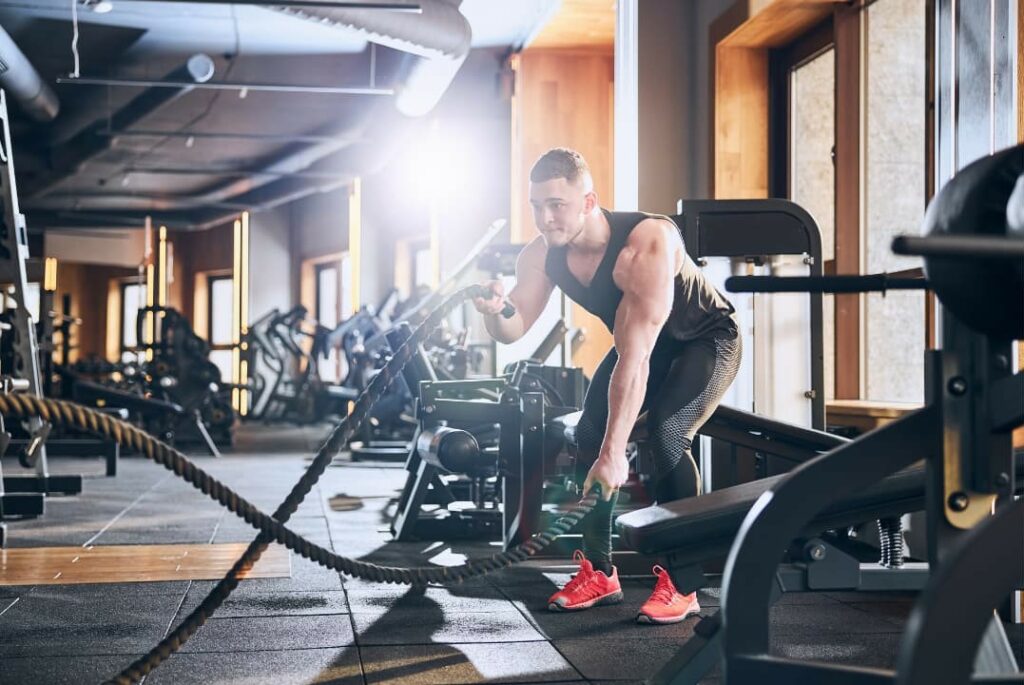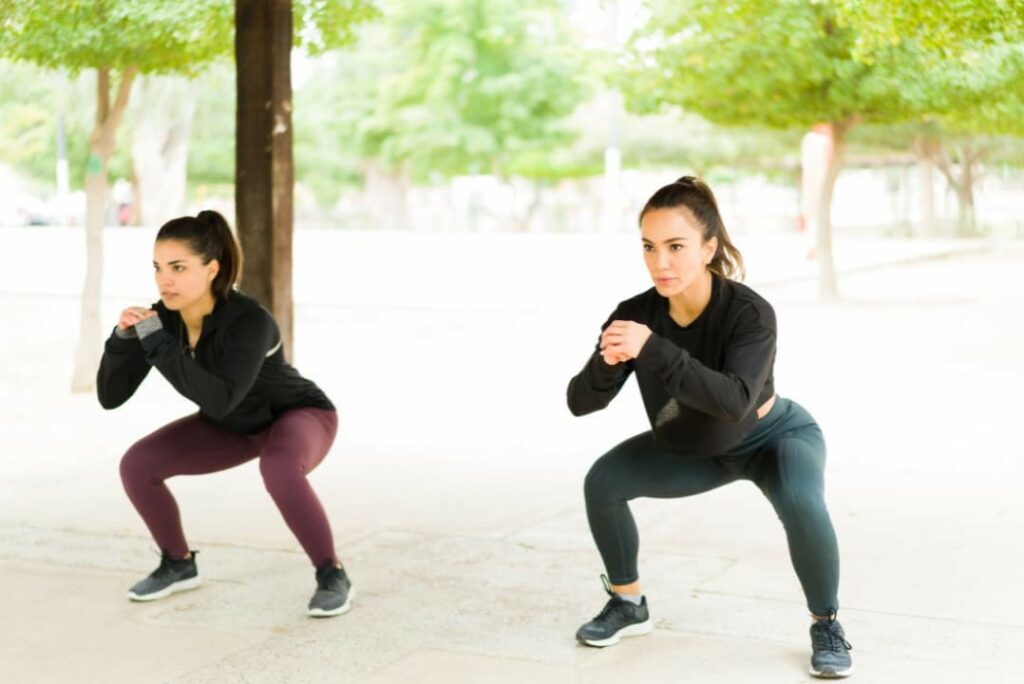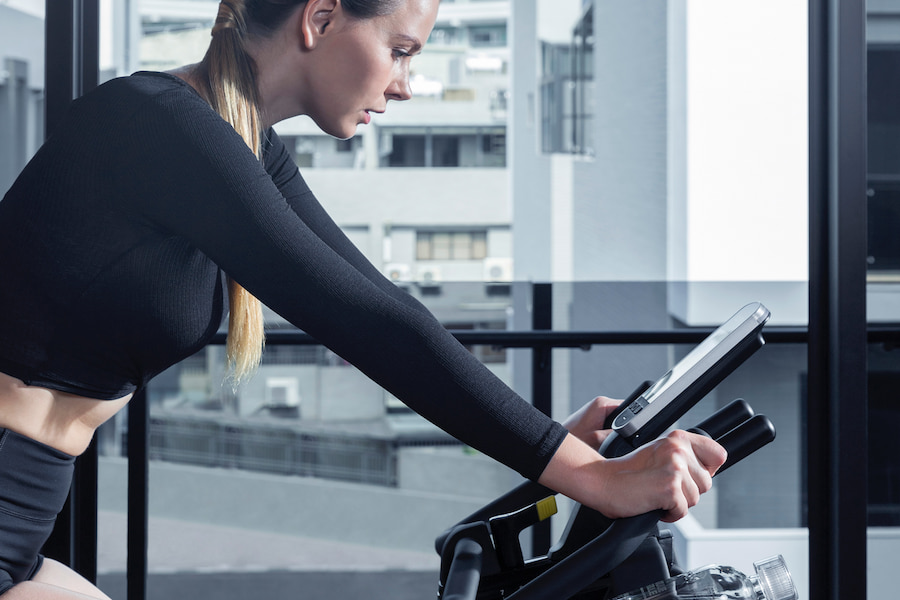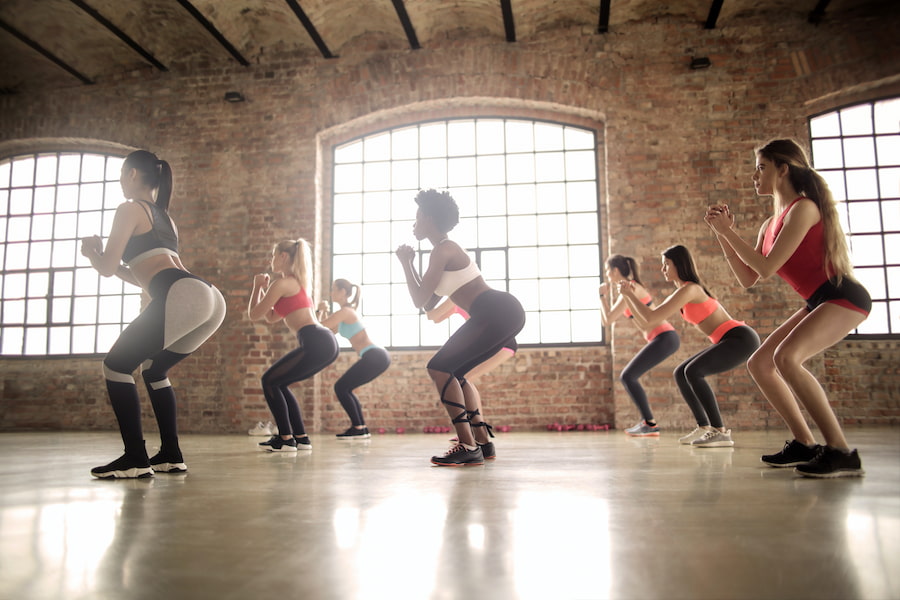The common refrain of ‘not enough time’ often sidelines fitness goals, as conventional exercise routines generally demand at least an hour of our time.
Enter High Intensity Interval Training (HIIT)—the time-efficient fitness solution that’s been surging in popularity since Professor Izumi Tabata Professor first pioneered this workout with Olympic speed skaters.
What is HIIT and How Does It Work?
Recognized consistently among the American College of Sports Medicine’s top 10 fitness trends since 2014, HIIT offers a full-spectrum workout in just 30 minutes.
HIIT is a type of workout that combines quick, intense bursts of exercise with short rest periods. It’s like mixing cardio exercises, which are great for heart health and stamina, with strength exercises that help you build and tone muscles.
The key is doing these exercises at a high energy level, which lets you get a lot of health benefits in a shorter amount of time compared to longer, less intense workouts.
HIIT workouts are based on the principle of interval training, where exercise is alternated with recovery periods.
In fact, HIIT takes this concept further by incorporating maximum or near-maximum effort during the intense intervals. This pushes your body into anaerobic zones, spiking your heart rate for fat burning and conditioning.
Defining Intensity and Intervals in HIIT
Keep in mind that not everyone participating in a HIIT workout will be at the same intensity.
“High-intensity” means whatever is highly intense for you. For this reason, HIIT can effectively be tailored to your unique needs.
Another great aspect of HIIT is the workouts tend to pack a lot of activity into a shorter amount of time. The whole workout takes about 30-60 minutes, and that generally includes 10 minutes of stretching, warming up, and cooling down.
The most intense portions of the workout take up about 15-20 minutes of that time, with the goal being an elevated, maximum, or target heart rate during that period. If your HIIT workout is too long (including the rest periods), it may negate the potential benefits.
HIIT workouts can also be approached from another angle—setting a work-to-rest ratio.
HIIT Ratios for Beginners
How long should a beginner HIIT workout be?
When just starting with HIIT, beginners should maintain intervals of 1-3 minutes at ~80% max heart rate with up to 5 minutes recovery rather than going full throttle. Allow proper recovery between HIIT sessions as well. Starting with 1-2 days a week prevents overtraining.
For example, these are typical ratios based on overall experience level:
- Beginner—2:1 (i.e. 120 seconds rest for every 60 seconds work)
- Intermediate—1:1 (i.e. 60 seconds rest for every 60 seconds work)
- Advanced—less than 1:1 (i.e. 30 or 45 seconds rest for every 60 seconds work)
One activity interval followed by one rest interval is considered one “round.” Most HIIT workouts have 5-6 rounds.

IS REST REALLY NEEDED?
Short answer: Yes! Don’t skip over the rest periods—your body uses this time to reset for the intense activities up next.
Since HIIT workouts can be intense and may push your body to the extreme, experts recommend taking a day or two break between sessions. For example, you may want to plan HIIT for Monday, Wednesday, and Friday, with yoga or walks scheduled on days in between.
Benefits of HIIT Workouts
The demanding nature of HIIT delivers remarkable benefits:
- Increased calorie burn: HIIT burns more calories per session than steady-state cardio. One study found a 30-minute HIIT workout torched 15% more calories than jogging at a consistent pace for 50 minutes.
- Higher post-exercise calorie burn: The intense intervals boost metabolism so your body keeps burning extra calories after your workout. This is known as EPOC (excess post-exercise oxygen consumption).
- Improved cardiovascular conditioning: HIIT enhances VO2 max more efficiently than lower-intensity cardio.
- More muscle tone: The intervals prevent muscle loss better than steady-state cardio while incinerating fat.
- Better blood sugar regulation: Studies show HIIT lowers glucose levels and insulin resistance.
- Lower blood pressure and resting heart rate: HIIT enhances heart health markers, especially in overweight individuals.
Popular HIIT Workouts For 2024
With so many options for HIIT workouts these days, it can be hard to know where to start. Fortunately, we’ve done the research for you!
Check out these top trends and tips for fitting your HIIT workout this year. Remember, you can mix and match some of the following activities together for a more fulfilling and enjoyable experience.
ROWING
Rowing is a favorite among gym rats, and at-home machines are becoming more affordable. A rower is great if you don’t want to alternate between machines during your workout.
Keep the momentum going by beginning with a 5-10 minute warmup, then increase the intensity for a 1:1 routine (row for 30 seconds, rest for 30 seconds). Rowing is perfect for intermediate-level HIIT participants and offers plenty of options to change up your routine.
CYCLING
Cycling is making a comeback, thanks to popular instructors like the quippy Cody Rigsby from Peloton.
One advantage of cycling over other HIIT methods is that cycling routines often allow you to stay active during the rest periods. In other words, cycling speed is reduced greatly during the rest periods instead of stopping altogether. This can be ideal for fitness enthusiasts interested in losing weight.
BOXING
Boxing offers benefits beyond feeling tough. Since it’s intense, it’s also a great way to release the day’s frustrations. Plus, if you prefer at-home workouts, you can simply install a heavy bag or speed bag to have access to HIIT at home. Platforms like Echelon also offer no-equipment required classes. HIIT boxing routines are also great if you’re looking to improve your body composition.
TABATA
Tabata is a specific type of HIIT that follows an advanced cadence, with 10 seconds of rest followed by 20 seconds of work (1:2 ratio). This generally lasts for about 8 reps.
Although many people consider Tabata difficult for beginners, common workout subscription services like Echelon or Peloton often offer Tabata classes. Look for ones labeled “beginner” if you’re just starting out. You may also want to attend in-person classes with a friend or family member, which can help motivate you to reach new heights.
AT-HOME WORKOUTS
Even though the pandemic period is over, at-home workouts are still having a moment. Thanks to YouTube, you can search for nearly any type of HIIT workout based on the equipment you have available at home. Plus, you can search based on ratio (such as “1:1 HIIT workouts”) or according to your expertise (i.e. “beginner HIIT workouts”).
Try searching for the following (with the term “HIIT”) to add variety to your routine:
- 15-minute dumbbell exercises
- 20-minute total body
- 25-minute treadmill
- 30-minute upper body circuit
- 40-minute cardio
Best HIIT Equipment
With the right equipment and HIIT interval training machines, you can take your home or gym HIIT workouts to the next level.
Treadmills allow you to program precise speed and incline intervals. Look for cushioning and horsepower that will support sprints.
Ellipticals provide low-impact cardio conditioning. Target high intensities by adjusting resistance.
Exercise bikes make cycling intervals easy. Opt for uncomfortable seats and heavy flywheels for max burn.
Rowing machines work the full body with zero joint impact. Monitor wattage for interval intensity.
Jacob’s ladders imitate sprinting by simulating climbing endless steps. Engages quads, glutes, core, and more.
Versaclimbers simulate climbing via pulling and pushing vertical handles, another great full-body option.
Battle ropes challenge your power through intense waves of upper body movement.
Kettlebells provide dynamic resistance for HIIT. Swings, cleans, and snatches strike fast.
Sample HIIT Workout Plan
Here’s a sample week of beginner HIIT workouts:
Monday: 10 minute treadmill intervals – 1 min sprint @5-10% incline/1 min walk @ 5% decline x 5 rounds
Wednesday: 10 minute bodyweight AMRAP circuit – max reps of 10 jumping lunges, 15 sit ups, 10 push ups x 5 rounds
Friday: 20 minute cycling intervals – 45 secs sprint with heavy resistance/90 sec easy spin x 8 rounds
Saturday: 5 minute Tabata workout – 20 sec max effort of squats/10 sec rest x 8 rounds.
HIIT Pre Workout
Eating Before HIIT:
- Why: To avoid feeling sluggish and lightheaded.
- What to Eat: Focus on carbs for energy and some protein to prepare muscles. Eat 1-3 hours before the workout.
- Examples: Banana or apple with almond butter, peanut butter on whole wheat toast, low-fat Greek yogurt with berries.
HIIT Post Workout
- Why: To replenish energy stores and repair muscles.
- What to Eat: Choose a mix of carbs and protein, ideally in a 3-to-1 ratio.
- Examples: Turkey on whole grain bread with tomatoes, a cup of low-fat chocolate milk, hummus with veggies and pita bread.
- When to Eat: Ideally within 15-20 minutes after the workout.
Hydration
- Importance: Essential before, during, and after HIIT.
- Tip: For workouts over an hour, consider a sports drink to replenish electrolytes.
- Note: Needs vary based on workout duration and intensity.
- Advice: Experiment with timing and types of food to see what works best for you.
Remember, individual needs can vary, so it’s important to pay attention to how your body feels and reacts to different foods and timings.
The Last Word on HIIT Workouts
While HIIT isn’t for the faint of heart, it can be tailored to your unique needs as a beginner.
In other words, HIIT isn’t just for athletes or gym rats—it can be done at home or if you only have a short amount of time available. If you’re just beginning HIIT for the first time this year, start with 2:1 HIIT interval ratios and work your way up. Then, enjoy engaging in more intense methods like Tabata to get your heart rate up!









